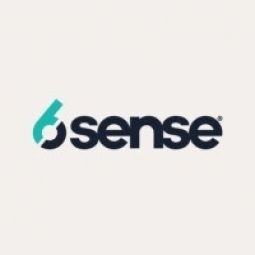技术
- 平台即服务 (PaaS) - 应用开发平台
适用行业
- 水泥
适用功能
- 物流运输
- 销售与市场营销
用例
- 供应链可见性(SCV)
关于客户
BluJay Solutions 是一家国际供应链软件提供商。该公司提供互联网络和 SaaS 平台,旨在帮助企业抓住机遇、预测干扰并提高效率和可持续性。 BluJay 的业务遍及全球,收入团队遍布世界各地,但在不同时区的工作经常不同步。该公司在协调收入团队的优先事项以及销售和营销方面的工作方面面临着挑战,并且需要一种新的、更高效的营销策略。
挑战
BluJay Solutions 是一家国际供应链解决方案提供商,正在努力应对协调收入团队的优先事项以及销售和营销工作的挑战。他们的营销策略主要是批量和爆炸,这往往被证明是令人沮丧的、低效的、昂贵的,而且效果并不理想。该公司已准备好采用新方法。然而,BluJay 的全球影响力给营销和销售协调增加了一层复杂性。该公司的收入团队遍布世界各地,但在不同时区的工作经常不同步。这就需要一种能够满足每个地区的特定需求,同时确保所有团队的透明度和一致性的解决方案。
解决方案
BluJay Solutions 向 6sense 寻求解决方案。 6sense 提供了直观的 ABM 编排平台,该平台很快成为 BluJay 上市战略的核心。借助细分分析和活动模块,BluJay 能够比以前更准确地细分目标市场。该平台还提供了有关哪些内容引起了受众共鸣的见解。 BluJay 的 ABM 拥护者 Andrea Feldman 致力于团结收入团队中的不同参与者,使用数据和指标来证明为什么 BluJay 需要实施强大的 ABM 战略。重点是在整个收入团队中建立全面的 ABM 策略、过渡到基于指标的营销策略以及增加帐户数量。
运营影响
数量效益

Case Study missing?
Start adding your own!
Register with your work email and create a new case study profile for your business.
相关案例.

Case Study
System 800xA at Indian Cement Plants
Chettinad Cement recognized that further efficiencies could be achieved in its cement manufacturing process. It looked to investing in comprehensive operational and control technologies to manage and derive productivity and energy efficiency gains from the assets on Line 2, their second plant in India.

Case Study
Digital Transformation of Atlanta Grout & Tile: An IoT Case Study
Atlanta Grout & Tile, a Tile, Stone & Grout restoration company based in Woodstock, Georgia, was facing challenges with its traditional business model. Despite steady growth over the years, the company was falling behind the web revolution and missing out on the opportunity to tap into a new consumer base. They were using independent software from different vendors for each of their department information and workforce management. This resulted in a lot of manual work on excel and the need to export/import data between different systems. This not only increased overhead costs but also slowed down their response to clients. The company also had to prepare numerous reports manually and lacked access to customer trends for effective business decision-making.

Case Study
Revolutionizing Construction Equipment Rental: A Case Study on ProsRent and ENO8
ProsRent, a startup that won the 'Best Financial Opportunity' and 'Best Pitch' at CodeLaunch 2016, aimed to revolutionize the way construction professionals source and rent heavy equipment. In the construction industry, project managers and contractors typically rent heavy equipment from supply companies. However, predicting inventory can be challenging, and finding the required equipment at the right time and place can be a hassle. If the preferred vendor doesn't have the required equipment, it results in wasted time and money in searching for it, often leading to higher costs due to non-preferred rates and increased delivery costs if the vendor is located far from the job site. Suppliers, on the other hand, desired access to a wider base of trusted renters that they didn't have to vet themselves and wanted to offer dynamic rental pricing based on demand and availability in their market. ProsRent's challenge was to produce a minimum viable product that was fast and first to market but also strong enough to engender loyalty and repeat business from the target market.

Case Study
AI-based Automation for Commercial Office HVAC: A Verdigris Case Study
Modern buildings are required to run longer hours, support a variety of end uses, and contribute to higher levels of economic productivity, leaving a thin margin for error. However, even the most advanced building and environmental control systems have failed to adequately support facilities and operations management. Buildings are often inefficient and the people using them are underserved. To meet occupant comfort and maintain cost and energy efficiency, a dynamic, AI-assisted approach is needed.

Case Study
Revamping EE's Legacy ERP: A Case Study on BT's Strategic Transformation
EE, even after its merger with BT, was operating its ERP estate on legacy infrastructure, hosted on the premises of a third-party supplier. This outdated system resulted in a volume-based operational model, higher time to market, longer delivery cycles, and unsatisfactory customer experience. BT recognized the need for a strategic transformation of these aging ERP systems and sought a partner who could proactively manage application services. The partner was also expected to handle development requirements associated with application management services, drive accountability, and ownership with a time and target-driven transformation of these services. BT's primary goals were to improve customer experience, reduce cycle time, and measure these improvements with precision.








